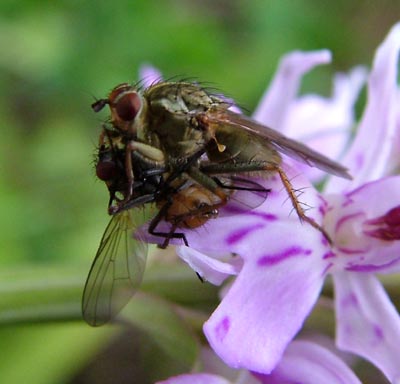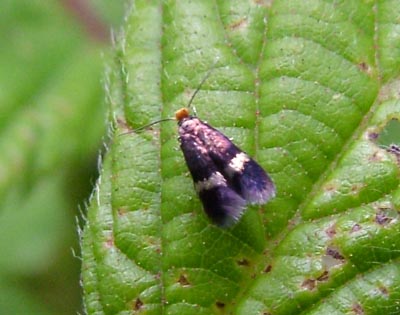Access road inside a coniferous plantation. The edges of the access tracks provide an untouched verge. The access tracks are amenity planted with deciduous trees and willows have, of course, made their way here, too. So this is my local mixed woodland. Many Common Spotted Orchids currently line the paths.
Occasional sunny periods in a very wet day.
This is the final stage of the Collybia aquosa shown on May 21st.
I was again hunting for good orchid pictures when I saw this green fly busy doing something. When I looked closer I saw that it was making a meal of a slightly smaller fly. It's a female Dung Fly - one of the predatory flies. Larger fly about 15 mm long.


This tiny moth is about 4 mm long. The lighter band is actually shiny and metallic.
Identified as Stigmella aurella. The Fact that this is on a Bramble leaf is no coincidence. The grub of this moth makes the leaf mines I've shown before on Bramble leaves.
Last year I got the Tufted Vetch on the Hedgerow. This year it has also shown up in the forestry. The Tufted Vetch appears to grow in exactly the same type of locations as the Bush Vetch, but is more selective, since it doesn't appear in many locations where Bush Vetch can be found.
Here's another of my hanging spider photos. This time you can actually see bits of the web.

This Dung Fly was hanging immobile under the Cock's-foot grass as shown. A fungus - Entomophthora muscae - has infested the gut of the fly and has now reached the outer surface. The fly has moved to the top of the grass plant before dying. This behaviour is known as 'Summit Disease'.

Finally, today, a close-up of a nice yellow and black hoverfly - Sericomyia silentis - on Marsh Thistle.